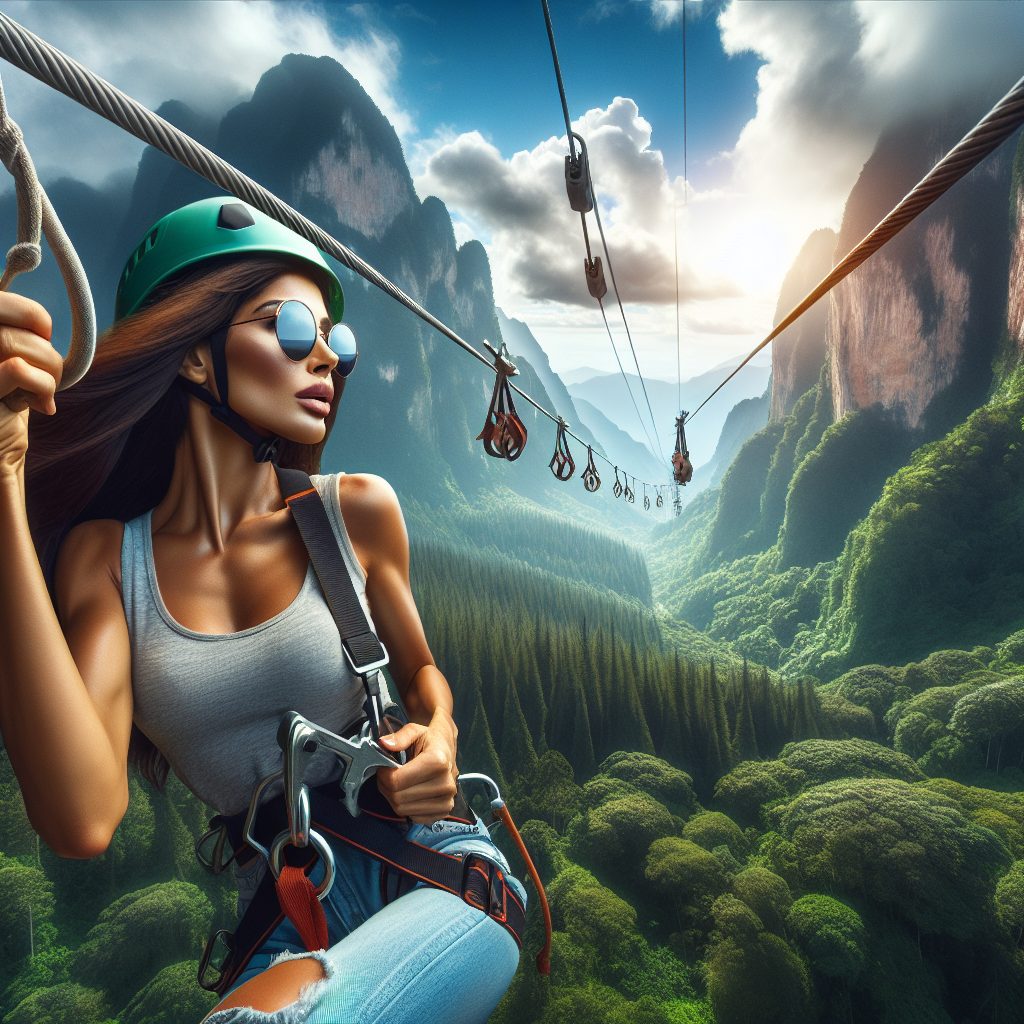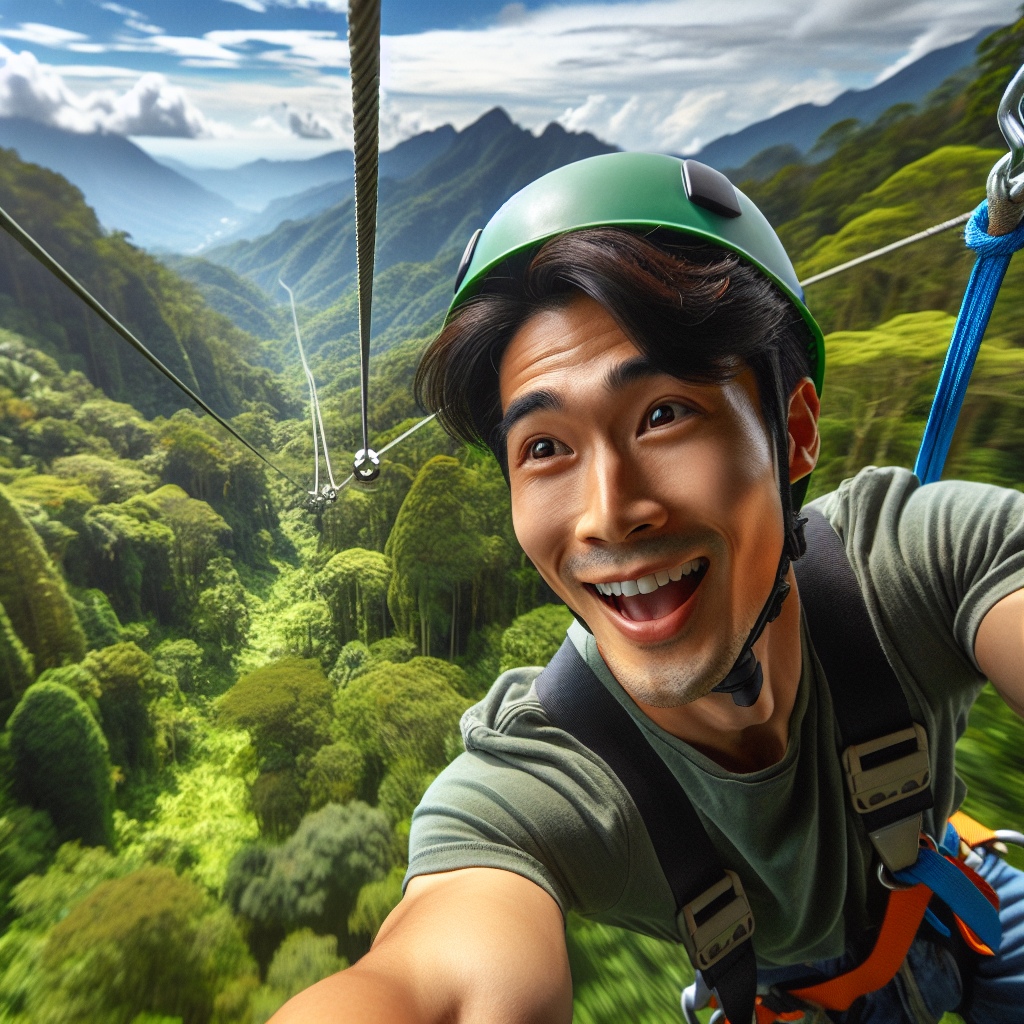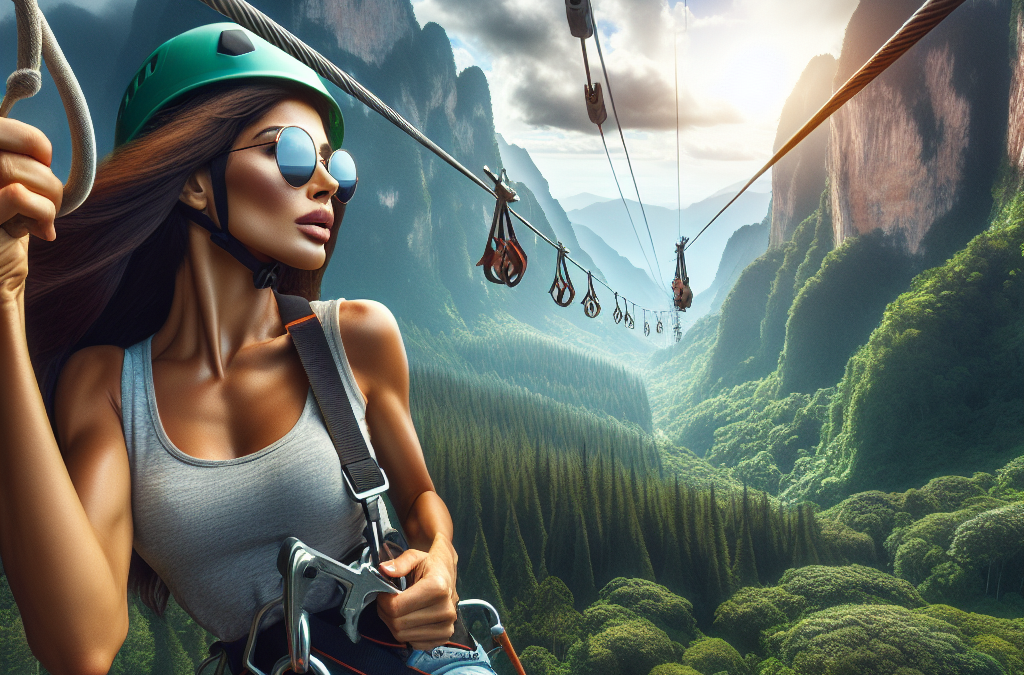Whether you’re on the quest for your next adrenaline rush, or simply looking to add some exciting activities to your travel itinerary, “The Adventurer’s Guide To Zip-Lining” is your treasure map! Your heart will race as you envision yourself swishing through the tropical rainforests, over the impressive mountain valleys, or across the glistening lakes, all while securely harnessed on a zip-line. This guide will provide you with a detailed direction on everything you need to know on your journey to becoming a zip-lining enthusiast. From picking the right destination to understanding safety procedures, let’s help you conquer those heights with confidence and style.

Understanding the Basics of Zip-Lining
It’s essential to understand the basics before embarking on any new adventure. This principle applies to zip-lining as well. Knowing the foundational aspects of this adventure sport can enhance your overall experience while ensuring your safety.
Definition of Zip-Lining
Zip-lining is a form of recreation or transportation that propels you through the air on a steel cable. You are usually secured by a harness connected to a pulley that effortlessly glides along the cable, providing a thrilling and unique perspective of the world beneath.
History of Zip-Lining
Did you know that zip-lining is rooted in humankind’s survival instincts? In the past, zip-lining was actually used as a way to traverse challenging landscapes like forests, mountains, and rivers. It was only later that zip-lining became popular as an exhilarating recreational activity for adventure enthusiasts.
Equipment Used in Zip-Lining
The basics of zip-lining equipment include a zip-line kit, which contains a cable, a trolley (pulley), and a harness. Helmets and gloves are also essential for protecting your head and hands. Some zip-lining kits might also include a braking system.
The Physics Behind Zip-Lining
Understanding the physics behind zip-lining can provide you with a whole new appreciation for this adventure sport.
The Role of Gravity
Simply put, gravity is what makes zip-lines work. When you launch from the top of the zip-line, gravity pulls you down, and this downforce propels you along the cable.
Understanding the Impact of Weight and Speed
Your weight affects the speed at which you travel along the zip-line. A heavier person will generally zip-line faster due to increased gravitational pull, while a lighter person may zip-line more slowly.
Importance of Zip-Line Angle
The angle of the zip-line significantly influences your speed. A steeper angle leads to a quicker ride, while a shallower angle offers a more leisurely trip.
Choosing the Right Zip-Lining Location
Selecting the right destination can make or break your zip-lining experience.
Research Zip-Lining Destinations
Do your homework and research various zip-lining destinations before making a decision. Consider the location’s safety standards, user reviews, and overall reputation.
Consider Destination Climate
The climate of the destination plays a crucial role in your zip-lining experience; rain, wind, or extreme temperatures could alter your plans or affect the safety of your zip-lining adventure, so it’s essential to consider the local weather patterns.
Assess Scenery and Views
What’s zip-lining without a breathtaking view? Ensure the location provides magnificent sights; after all, the thrill of zip-lining comes from soaring through stunning panoramas!
Preparation Before Zip-Lining
Preparation plays a key role in ensuring a fun and safe zip-lining experience.
Physical Fitness Requirements
Zip-lining may seem effortless, but it does require certain physical abilities. A good grip strength helps control your speed and direction. Adequate core strength aids in maintaining balance during the ride.
Medical Considerations
Medical considerations are also essential. If you have certain existing medical conditions, they may impact your ability to zip-line safely. Always consult with your healthcare provider if you’re unsure.
Packing Essentials for Zip-Lining
Pack appropriately for your zip-lining adventure: Wear close-toed shoes and comfortable clothing. Depending on the weather, pack sunscreen, bug spray, a light jacket, or any additional necessary items.

The Safety Measures in Zip-Lining
Safety is paramount in any adventure sport.
Understanding Safety Devices
Familiarize yourself with the safety devices used in zip-lining such as the harness, carabiners, cables, and braking systems. Being aware of how these elements work can ensure a safer and more confident ride.
Zip-Line Construction and Inspection
Information about the construction and regular inspection of the zip-line site is imperative. Knowing that the zip-line is well-maintained and inspected for safety provides peace of mind.
Role of Zip-Line Guides
Zip-line guides are trained professionals who guide riders through the entire process. They provide safety instructions, assist with gear, and direct the launch and landing, ensuring a safe and thrilling experience.
The Zip-Lining Experience
So, what exactly happens during a zip-line adventure?
The Launch
The launch sets the tone for your zip-lining ride. After a brief safety check by your guide, you step off the platform, and gravity propels you down the cable for a heart-pounding ride.
During the Ride
During the ride, you’re suspended high above the ground, moving at thrilling speeds, taking in the amazing surroundings. Be sure to fully immerse yourself in this adrenaline-pumping experience!
Landing after Zip-Lining
As the end of the line nears, you will slow down naturally or use a brake if provided. Zip-line guides assist the landing, ensuring safe dismount from the line.
Overcoming Fear of Heights for Zip-Lining
Fear of heights, also known as acrophobia, is a common fear, but don’t let it stop you from the thrill of zip-lining.
Potential Challenges for Acrophobics
Acrophobics may find the heights and high speeds daunting. The anticipation before launch can also be a challenge. But remember, zip-lining equipment and guides are there to keep you safe.
Techniques to Overcome Fear
Relaxation techniques, such as deep breathing and visualization, can help manage the fear. Also, focusing on the beautiful scenery can distract your mind from the fear of heights.
Role of Zip-Line Guides in Assisting with Fear
Never underestimate the role of zip-line guides. They offer encouragement and reassurance, making you feel safe and confident.
The Environmental Impact of Zip-Lining
Like any human activity, zip-lining can impact the environment.
Effects on Wildlife
If located in a natural habitat, zip-lining might disrupt wildlife. To minimize this, choose operators who adhere to guidelines that minimize interference with local fauna.
Effects on Local Environment
Construction of zip-line structures can also impact the local environment through soil disturbance or vegetation removal. Operators using sustainable practices aim to minimize these impacts.
Sustainable Practices in Zip-Lining
Opting for zip-line operators who employ environmentally friendly practices can help protect the local ecosystem. This may include low-impact construction methods, limiting noise pollution, and ongoing environmental monitoring and management.
Unique Zip-Lining Experiences Around the World
There are many unique zip-lining experiences available globally.
Longest and Highest Zip-Lines
For those seeking extreme thrills, there are a number of record-breaking zip-lines. These include the longest, fastest, and highest zip-lines, providing an intense thrill unmatched by your average zip-line.
Nighttime Zip-Lines
Experience the nocturnal scenery with a night zip-line! Under the starry sky, the exciting becomes more mysterious and captivating.
Zip-Lines through Various Natural Settings
From tropical rainforests to snow-covered mountains, the settings for zip-lining are as varied as they are picturesque.
Next Steps After Your First Zip-Lining Experience
After checking zip-lining off your bucket list, what’s next?
Repeating the Experience
Why not do it again? Repeating the zip-line experience can help conquer fears, build confidence, and add a new level of enjoyment to the sport.
Exploring Other Adventure Sports
If you enjoyed zip-lining, you might want to try other adventure sports. Rock climbing, bungee jumping, or rafting could be the next exciting adventure!
Becoming a Zip-Line Guide
Embrace your love for adventure and share it with others by becoming a zip-lining guide. Not only will you enjoy the adrenaline rush every day, but you’ll also have the chance to inspire others.
Whether you’re a thrill-seeker or a nature lover, zip-lining offers a unique way to embrace your adventurous spirit. Get ready to step outside your comfort zone, soar through the skies, and live an unforgettable experience!

